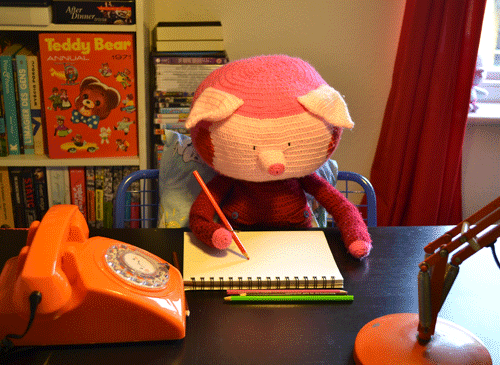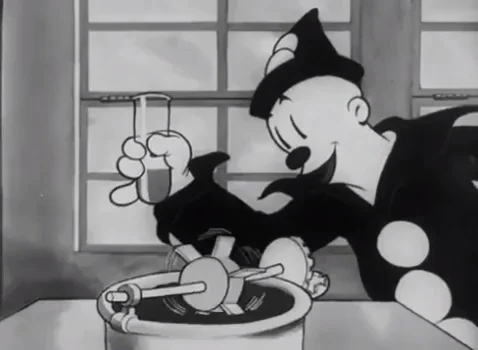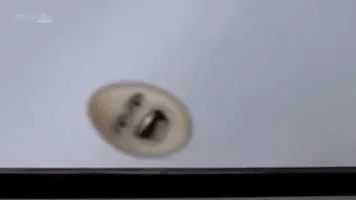Two Kinds of Students
Your growth as a creative person of any kind depends on recognizing your type.
Note: this article is mostly about students learning to draw. Some of you may think this is not relevant for you, your creative business, your life in general … but please stick with it to the end. I think you’ll find it interesting and maybe even helpful.
Any art professor will tell you there are two types of students who will likely improve the least during their time in college. Both of these types share one important trait: they believe they are, technically speaking, already very good artists.
The first type is not good at drawing, but they believe the opposite to be true. Somewhere along the line, usually due to lack of competition in their environment, or undeserved/misguided praise for their mediocre creations (usually from parents and friends), they became convinced that they have already reached the height of their drawing powers and therefore have little left to learn.
This type of student can be helped to see the light, but it is challenging work.
The second type actually is good at drawing, objectively speaking. This person displays a decent understanding of the fundamentals of design and has developed a better-than-average drawing vocabulary. However, because they know their work is fairly good, they are often set firm in their process and technique; they have formulas that work well enough and are therefore reluctant to try anything new and push themselves outside of their artistic comfort zones.
This type of student can sometimes be almost impossible to teach.
In both cases, these students lack either the objectivity or the courage required to see their work in the proper context and open a pathway to growth and improvement.
The first type (not good at drawing) is in a delusional state and must be helped to see the truth of the matter; when the reality of their shortcomings is confronted and accepted, they are ready to learn and can ultimately go far with good guidance and encouragement. The key to success with these students is not to bluntly tell them their work is sub-par, but to lead them to this conclusion on their own by strengthening their powers of observation, thus giving them the tools to see their work for what it is. I have seen this method succeed firsthand in my own teaching experience, and it is very rewarding when the breakthrough happens.
With the second type (good at drawing), I readily admit that I have had mixed results in the classroom. Their growth is stunted by several factors:
Too much praise from peers, who have not yet achieved the same level of skill.
Resistance to change because their current approach is “good enough.”
Fear that a new approach will “mess up” their existing technique.
Lack of comfort with producing unpolished work, resulting from a deviation from their old methods.
Do you recognize yourself in either of these types?
If you are the first type, you might not even know it. Most of the time, somebody else needs to make you aware.
If you are the second, you probably would rather just change the subject.
Either way, it is important to know. Otherwise, there is stagnation. And there is little chance you will escape it without the help of a person who really cares enough to help.
Me? I was the second type.
Everybody in high school told me I was the best artist in the school. Teachers and students repeatedly affirmed this. Eventually, I believed it and I got fairly well stuck at a decent (but not great) level of skill with my drawings. And maybe my artistic growth would have stopped there, at 18 years old.
So, thank goodness for Michael Ananian.
Mike was my drawing teacher in my Freshman year of college. He had the wisdom and experience to recognize my type from day one and within a month, he had me making a total mess on my paper, trying new things, and loving it. I was totally malleable, like a fresh lump of clay. In short, I became the perfect student, ready to drink up whatever my art professors threw into the soup.
How did Mike accomplish this?
The truth is, I can’t tell you exactly how he did it, because it was a long time ago and I have forgotten some of the details. But, I will share what I do remember, and I believe these are key points.
First, Mike told me, in no uncertain terms, that everything I already knew about drawing— everything I could already do— was permanent knowledge. I knew it and I would always know it. There was no danger of my losing the skills and techniques I felt so confident wielding in my practice. If I wanted to get to the next level, I had to pretend I was starting from scratch with a new approach (or multiple new approaches). Then, after some time, I could *add* this new knowledge to the mix.
I seem to remember him explaining this concept in a calm matter-of-fact way, in only a few minutes— no big speech or anything— but it totally transformed me into a different kind of student right there on the spot. In fact, I believe that with those words, Mike set me on a path to success as a professional illustrator and designer on that day.
Being open to, or more accurately, excited about trying new things with my art, helped me grow faster than I thought was possible. At first, of course, I made a mess with whatever I was trying to learn and employ in my work. But the thing that always helped me to push through to a new plateau was that belief Mike instilled in me that everything was additive. Nothing could undo whatever goodness was being baked into my artistic practice along the way.
This is not to say that every idea or approach was a great fit. If something was not for me, I could simply choose to put it aside, but the important thing was that I tried things on for size without hesitation, and always with the mindset that there was something worth knowing, no matter how small, in every new thing that came my way.
The second big thing Mike taught me about drawing (and maybe life, in general), though he may not have taught it intentionally, was the importance of making mistakes — LOTS of them — and how these mistakes ultimately contributed to a better product in the end.
Like many young artists, I had developed near-perfect formulas for creating my drawings, error-free. I thought this made me “good.” Unsurprisingly, these drawings were boring and repetitive. Same figures, same angles, same poses, same compositions. Same, same, same.
It was through Mike’s live demos in class that I got to see, firsthand, the necessary process an artist goes through of building a drawing out of total chaos, with hits and misses throughout. It was a revelation.
Two things disappeared when I embraced the act of making mistakes as an essential part of drawing, rather than something to avoid:
Ego (and good riddance). I used to want to “protect” myself (my pride, really) from making mistakes when creating anything. I thought a drawing was only successful if the process was smooth and perfect all the way through.
Uniformity. Suddenly, my drawings were all different from one another and whenever I hit upon something fun or interesting in a piece, I could put it in my pocket and use it later. I quickly added a lot of tools to my kit.
I realize not all of you out there draw for a living, so thanks for reading this far. I believe these learning ideas are useful for anyone who is trying to get a creative business off the ground, get better at their craft, or become more successful, in general.
If you think you’re good at something, and you’re actually not, you’re stuck. And if you know you’re good at something, but unwilling to go through the uncomfortable process of getting better, you’re also stuck.
Some of you might be one of these two types, and it can be hard to acknowledge this. If you suspect you’re Type 1, ask some honest and trusted friends/colleagues in your profession if your skills could use a serious tune up. If you suspect you’re Type 2, you might benefit from the help of a mentor you respect who is further along in the game.
I believe the majority of us are actually a third type of student/person, and this type happens to be my favorite to teach. I’m talking about a person who wants to grow and improve, but doesn’t know how. If this feels familiar to you (odds are, it does), consider yourself lucky— you have lots of options.
Next week, I will tell you how I help this third type of student find the confidence they need to keep making progress and succeed.
Thanks, as always for reading. Goodies are below. 👇
Remember, the easiest way to support my work on The Accidental Expert is to share a link to this (or any other) issue.
Take care of yourselves and each other, remember to be kind, and I’ll say, Ciao for now.
Kyle
Art / Digital Products / My Meditative Drawing App / My Notebook / Everything Else
Goodies
Fellow digital brush creator and artist, Vegalia, creates the best black hair brushes, hands down.
The greatest list of Photoshop keyboard shortcuts I have seen in my life.
Perhaps my favorite Twin Peaks moment ever.
The boys at the Two Designers Walk Into a Bar podcast have a new season. As a kid who read tons of comics growing up, I found this episode particularly great.







I knew I wasn’t that good but wanted to be, so was open to trying things. It was inspiring to see how everyone else worked. And to bumble into happy accidents that resonated with our august faculty.
I remember a guy with a philosophy degree and bad drawings in class trying to use rhetoric to persuade to our teacher--a Lucien Freud level artist--that the student’s pitiful drawings were in fact, works of genius. It was extremely cringe to watch as the fellow had no self awareness or taste. Delusional is exactly the right word.
He dropped out not long after.
I taught elementary school art for 35 years. Over all, it was very rewarding. The youngest typically dive right in and have a ball. As they get older, usually around 5th grade, they become more and more critical of their artwork. They didn’t like mistakes. They seemed to think (and I’m sure this reflected opinions from their parents) that artistic ability was something you were born with. You either were an artist, or you weren’t. It had to come easy. Struggle, making mistakes, starting over... no way! Do you remember the Disney cartoons with a paintbrush that flowed over a paper and the scene just appeared like magic? That was what artists were supposed to be able to do. Schools offer instruction in media and technique, but teaching the creative process is tougher, and there is never enough time in a public school schedule.